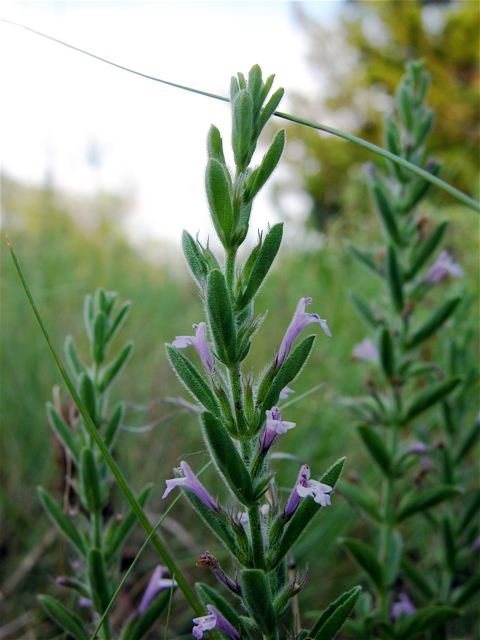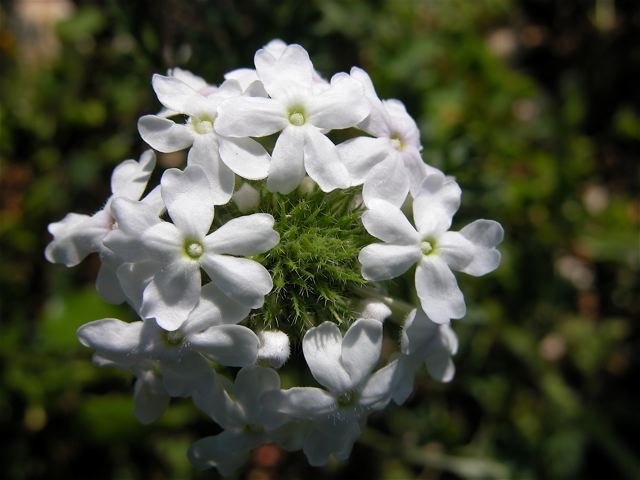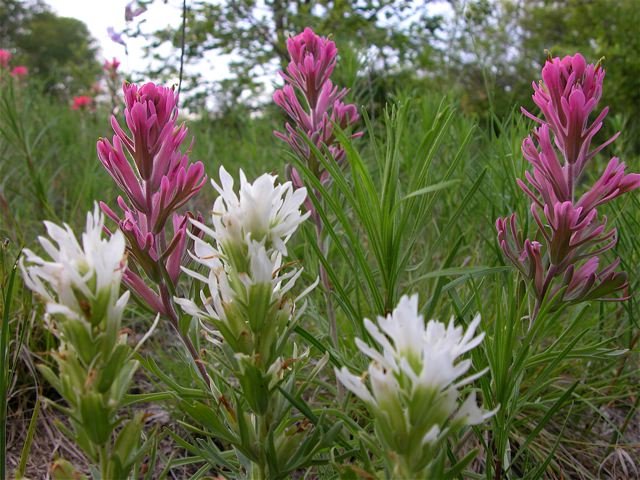Prairie Notes #42: Freaks of Nature: Albinism at Tandy Hills
Prairie Notes are monthly photo/journal observations from Tandy Hills Natural Area by Founder/Director, Don Young. They include field reports, flora and fauna sightings, and more, mixed with a scoop of dry humor and a bit of philosophy. They are available free to all who get on the FOTHNA email list.
Freaks of Nature: Albinism at Tandy Hills
Prairie Notes #42
June 1, 2010
1. Field Report
2. Freaks of Nature
3. Scurf Pea: The Bluebonnet Imposter
1) Field Report
A little rain would be nice. Summer Solstice 2010 is still three weeks away but North Texas is already dry. With only .86" of rainfall in May (4.85" is normal), many of the mid-Spring wildflowers yielded the stage early to deeper-rooted prairie grasses. The thick clouds of Bishop's Weed we enjoyed last year have not materialized, except on a few seeps. Before the dryness set in, Purple Cone-flower had a magnificent season that has faded into robust stands of American Basket Flower and Lemon Bee Balm that are currently peaking. Hummingbirds, butterflies, dragonflies, damselflies, bees and other insects are harvesting the pollen while they can. The slope that burned last July and the Brush Bash areas are still lush with these plants and a sprinkling of Indian Blanket. Less showy and requiring a closer look are Lemon Pennyroyal, Milkweed and Queen's Delight. Who in their right mind would leave the comforts of AC on a hot, humid day to hike a grassy prairie full of briars, burrs and bugs? Come to the meadow and find out for yourself. Even on a hot day, Tandy Hills offers an elemental connection to the natural world that gives back in abundance. (After 6 pm is an ideal time to enjoy THNA.)
2) Freaks of Nature
Albino or white variations in wildflowers is always striking to see. On my hikes at Tandy Hills in April, I was lucky enough to see a number of uncommon albino plants including, Indian Blanket, Prairie Verbena, Blue-eyed Grass, Indian Paintbrush, Engelman Sage and Prairie Celestial. Albino Wine Cup has overcome the purple to become the dominant color at THNA. In October albino Gayfeather plants can be found. Here's what Master Naturalist and Manager of the FW Nature Center, Suzanne Tuttle, wrote about albino wildflowers: Within any biological population there is a possibility of partial or total albinism. The frequency of the recessive gene in the population’s pool determines how often it is seen. I’m sure it also can occur due to random mutation. Albino plants are not too common but are certainly possible – white horticultural specimens are now seen regularly in the floral trade in flower arrangements; the parents had to come from somewhere. Some literature describes albinism as fatally weakening the plant but that is contrary to the robust albinos I've observed at THNA. The term is also used to indicate a white form of a normally colored flower which, I think, is the case at THNA. Further, albino plants can be a separate species. I hope to learn more about this fascinating phenomena.
3) Scurf Pea: The Amazing Bluebonnet Impostor
Tandy Hills is well known for an abundance of spring wildflowers but with one notable exception: Bluebonnets. For years I searched the hills looking for one. Finally, about four years ago I found a handful of plants in the far northwest corner of THNA, or so I thought. To the untrained eye, they seemed to have all the characteristics of the state flower. Alas, they are not. Suzanne Tuttle, Manager of the FW Nature Center and Master Naturalist, ID'd the plant for me as a Scurf Pea (Pediomelum sp.). Scurf Pea is perennial while Bluebonnets are annual. (That explains why the plants I saw came back in the same place every year.) Scurf Pea is also more robust and blooms a little later than Bluebonnets. They are also missing the distinctive white "eyes" of Lupinus texensis. Also known as Indian breadroot, the starchy roots of Scurf pea were probably the most important wild food gathered by native Americans of the Great Plains. The now extinct Plains Grizzly Bear dug the roots with a passion, according to William Clark (of Lewis and Clark). Scurf Pea is also said to be the "secret ingredient" in Indian fry bread. The "pomme de prairie" was was also a favorite food of later European immigrants. Scurf Pea populations have been greatly reduced due to grazing and is uncommon outside of undisturbed prairies. For that reason, Scurf Pea is yet another indicator of how healthy THNA is and one more reason to keep THNA like it was. Now that Memorial Day is upon us, don your white duds and come to the meadow for Scurf Pea (Pediomelum sp.)















